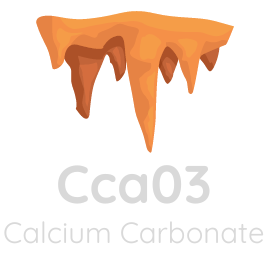
Calcium carbonate is a naturally occurring mineral that is widely used in various industries. While it is commonly known for its white color, the exact hue can vary depending on several factors.

Natural Color Variations
- Impurities: The presence of impurities, such as iron oxide or manganese oxide, can impart a yellowish, brownish, or grayish color to calcium carbonate.
- Crystal Structure: The crystal structure of calcium carbonate can also influence its color. For example, aragonite, a crystalline form of calcium carbonate, may exhibit a slightly different color than calcite, another common form.
- Weathering: Weathering processes can alter the color of calcium carbonate. Exposure to sunlight, wind, and rain can cause discoloration or bleaching.
Artificial Coloration
In some applications, calcium carbonate may be intentionally colored to achieve specific aesthetic or functional properties. This can be done through:
- Pigmentation: Adding pigments or dyes to calcium carbonate can create a wide range of colors.
- Chemical Treatment: Treating calcium carbonate with certain chemicals can alter its color or properties. For example, heating calcium carbonate can produce calcium oxide, which is white or slightly yellow.
Applications of Colored Calcium Carbonate
Colored calcium carbonate is used in various industries, including:
- Paint: Pigments are added to calcium carbonate to create different shades of paint.
- Plastics: Colored calcium carbonate can be used as a filler or pigment in plastics to enhance their appearance and properties.
- Paper: Colored calcium carbonate can be added to paper to improve its brightness, opacity, and printability.
- Cosmetics: Colored calcium carbonate is used as a filler and pigment in cosmetics such as makeup and skincare products.
- Food: Food-grade colored calcium carbonate may be used as a colorant or anticaking agent in certain food products.
Factors Affecting Color Intensity
The intensity of the color of calcium carbonate depends on several factors, including:
- Concentration of Pigment: The amount of pigment added to the calcium carbonate will determine the color intensity.
- Particle Size: Smaller particle sizes can result in a more intense color.
- Distribution of Pigment: The distribution of pigment within the calcium carbonate particles can affect the color uniformity.
- Light Conditions: The color of calcium carbonate can appear different under different lighting conditions.
Conclusion
While calcium carbonate is often associated with its white color, it can exhibit a variety of hues depending on factors such as impurities, crystal structure, weathering, and artificial coloration. The choice of color for calcium carbonate depends on the specific application and desired properties.
read more : Calcium Carbonate (CaCO3) and Calcium Oxide (CaO): A Comparative Analysis




